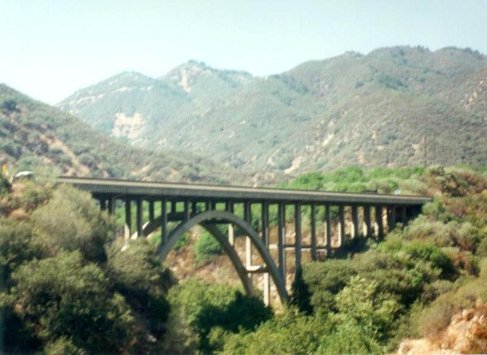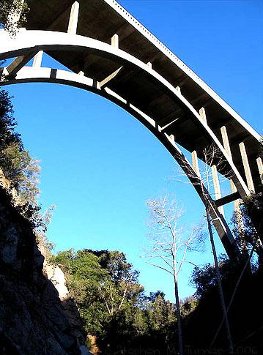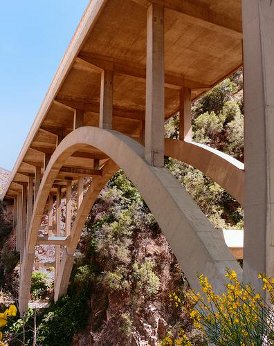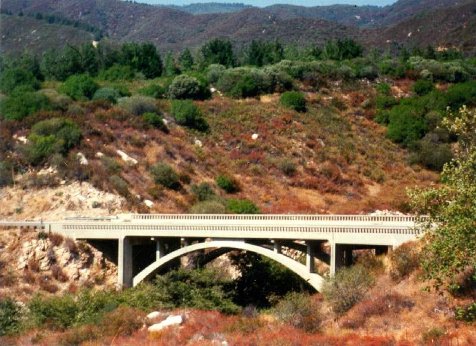City Creek and East Fork City Creek Bridges
San Bernardino National Forest, California
Client:
California Department of Transportation (Caltrans) District 8
1801 30th St.
Sacramento, CA 95816
Nabil Fraywat
Tel. 909-383-6480
Date:
Construction completed 1998
Design completed 1996
Scope of work:
Seismic Retrofit Design
Construction cost:
US $2 million
Services Performed:
- Seismic vulnerability study
- Retrofit strategies
- Retrofit design
- Preparation of bid plans
- Construction support
Issues:
- Seismic retrofit of historical structures
- Arch bridge design
- Environmentally sensitive site access


The City Creek Bridges carry California Highway 330 across ravines carved by City Creek in the San Bernardino National Forest northeast of Los Angeles. They are open-spandrel reinforced concrete arches, built in 1948, that are candidates for inclusion in the National Register of Historic Places.
OPAC Consulting Engineers was engaged by Caltrans under the Phase II statewide seismic retrofit program, to evaluate seismic vulnerability of the bridges, develop seismic retrofit strategies, and prepare seismic retrofit bidding documents. The bridges were characterized by Caltrans as "difficult" seismic retrofit projects.
Seismic vulnerability of the bridges was established using displacement ductility methods, using dynamic analysis of global models to estimate demands, and pushover analysis of inelastic local models to estimate capacities. OPAC developed a refined method for estimation of displacement demands in the spandrel bents that was subsequently adopted by the Caltrans working group on arch bridges as the standard method. OPAC also developed a method for evaluating arch rib capacity under combined axial force, torsion, biaxial moment, and biaxial shear.
The retrofit strategy adopted for the bridges included locking intermediate expansion joints, strengthening the deck with reinforcement embedded in new aesthetically-compatible reinforced concrete guard rails, and local strengthening of the arch ribs. This strategy allowed upgrading the seismic performance without significant influence on appearance, and without destruction of the fragile ecology in the canyons.

